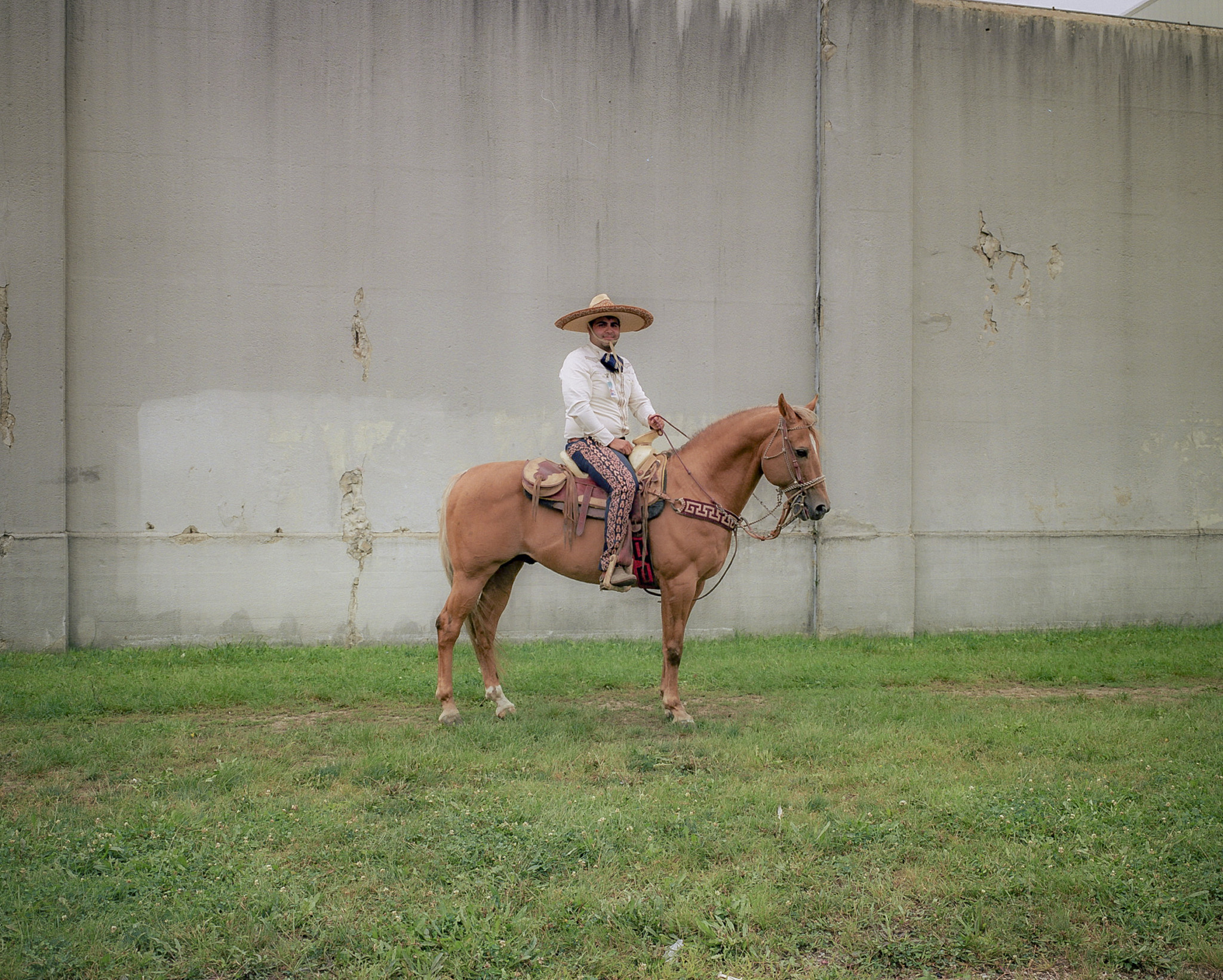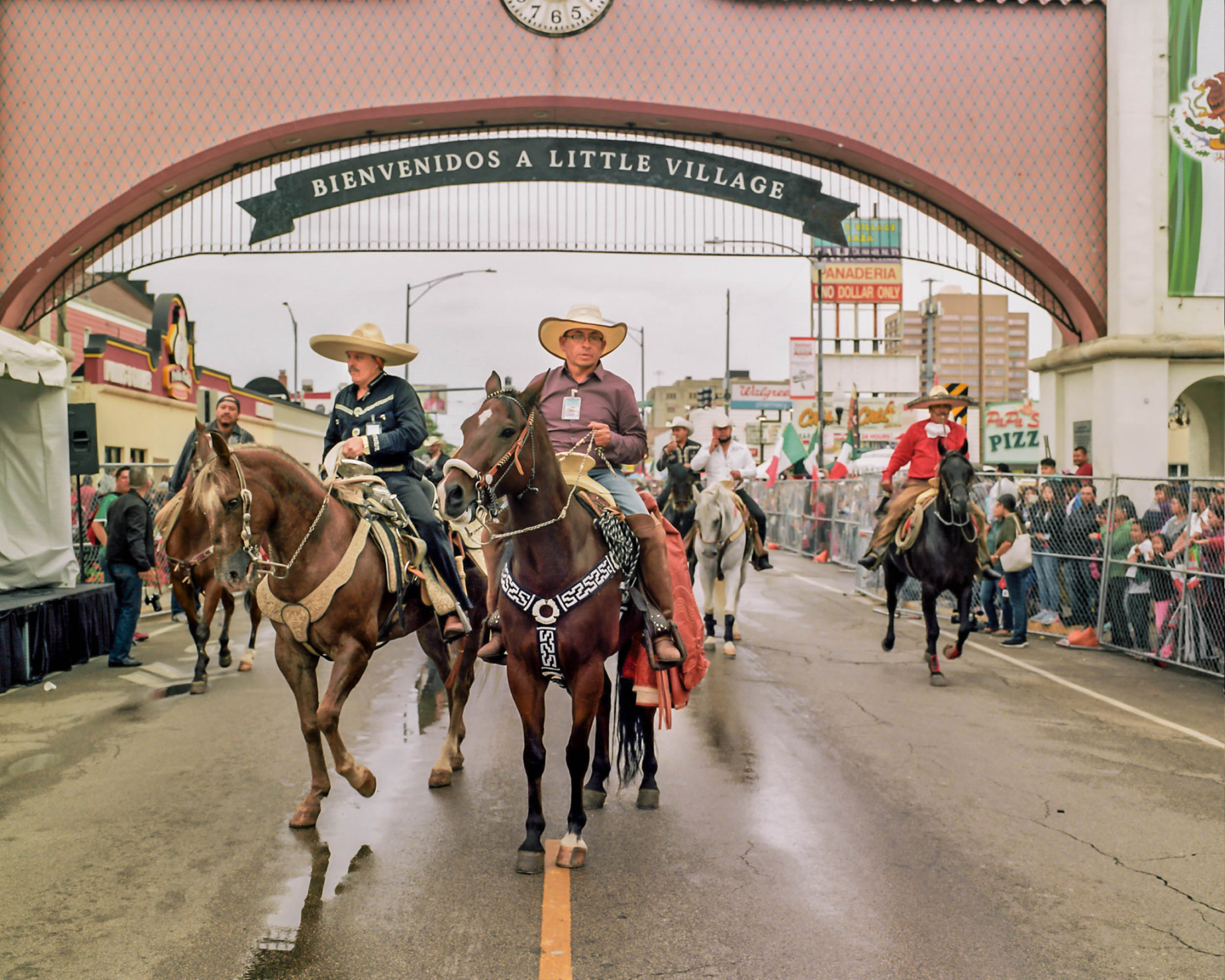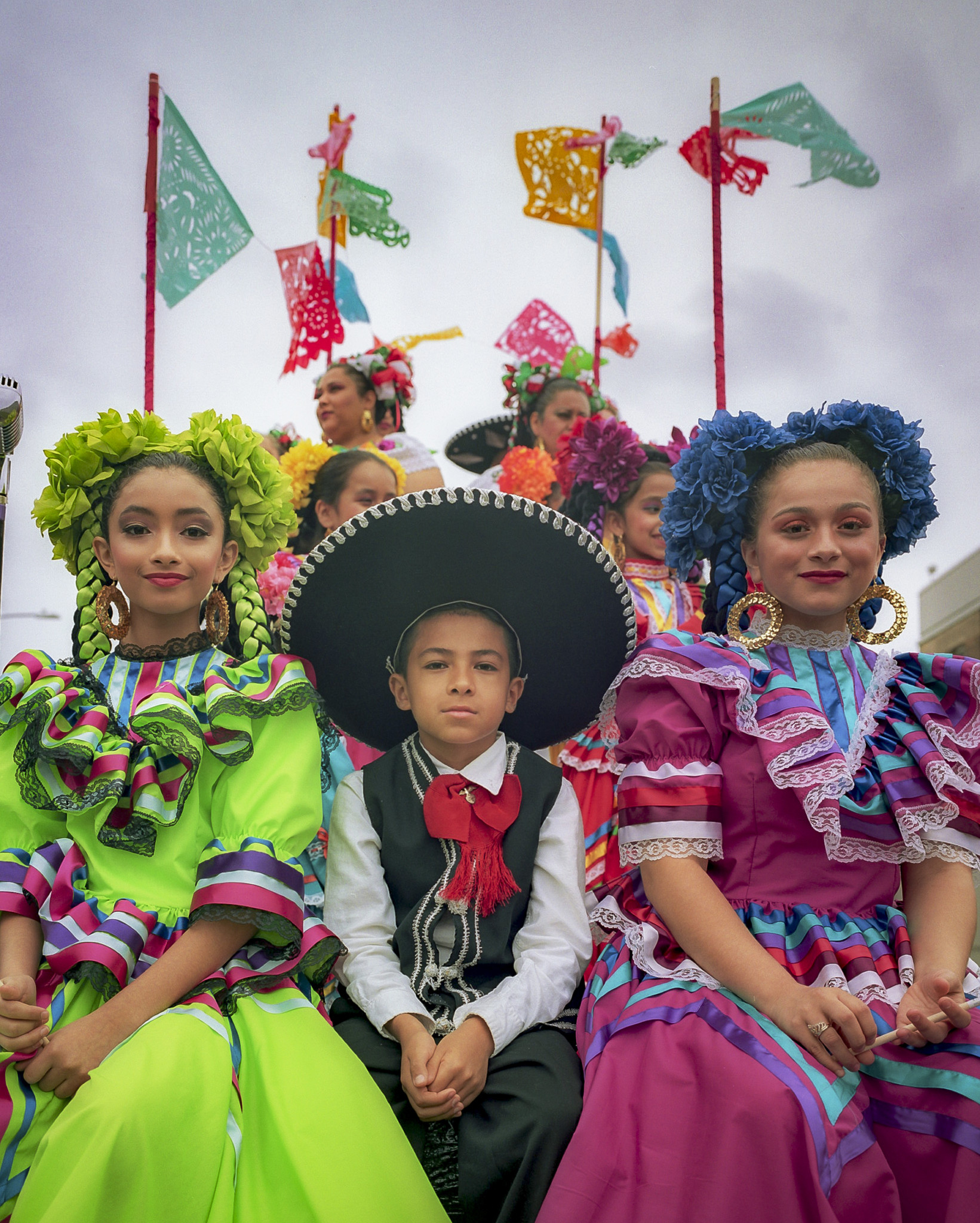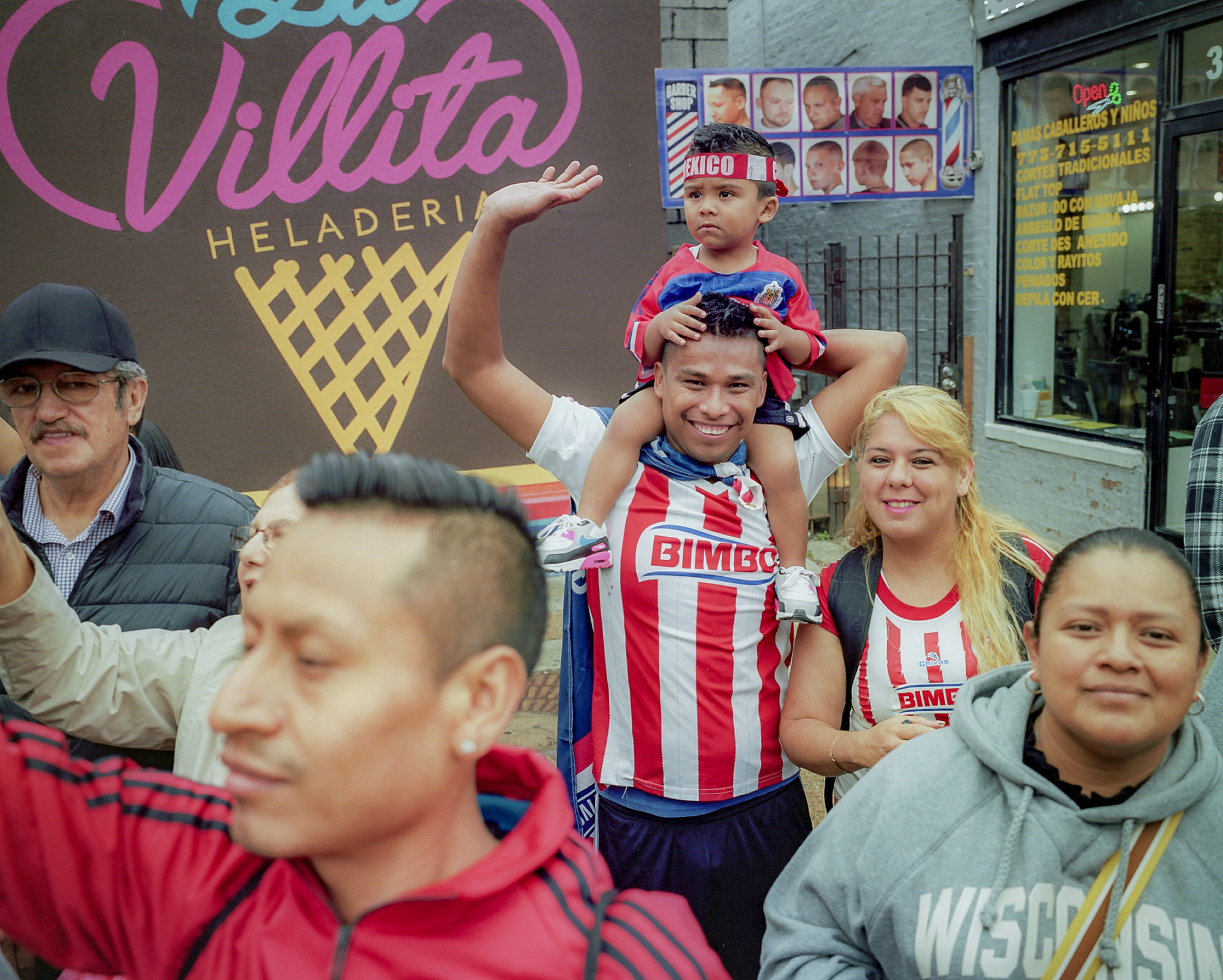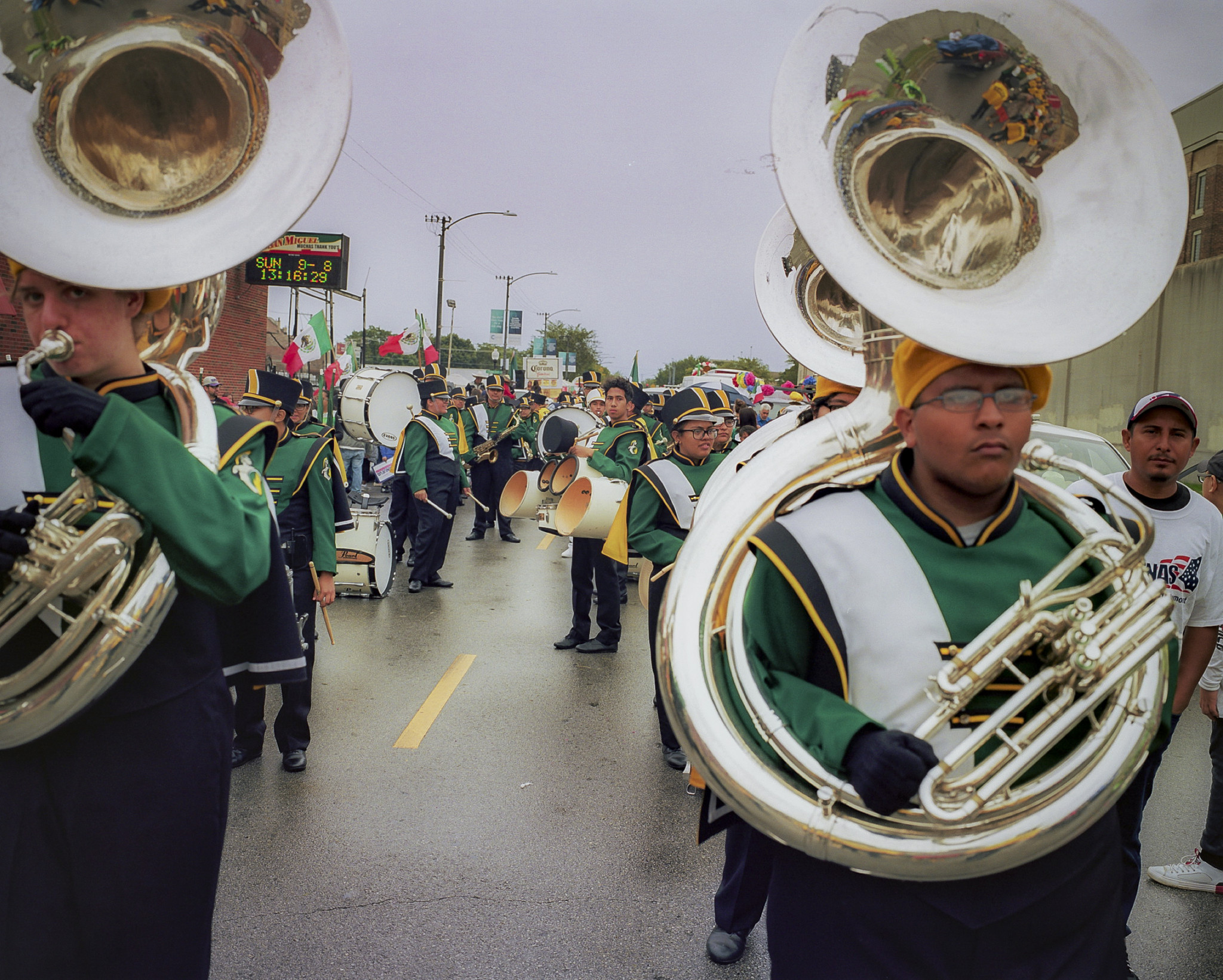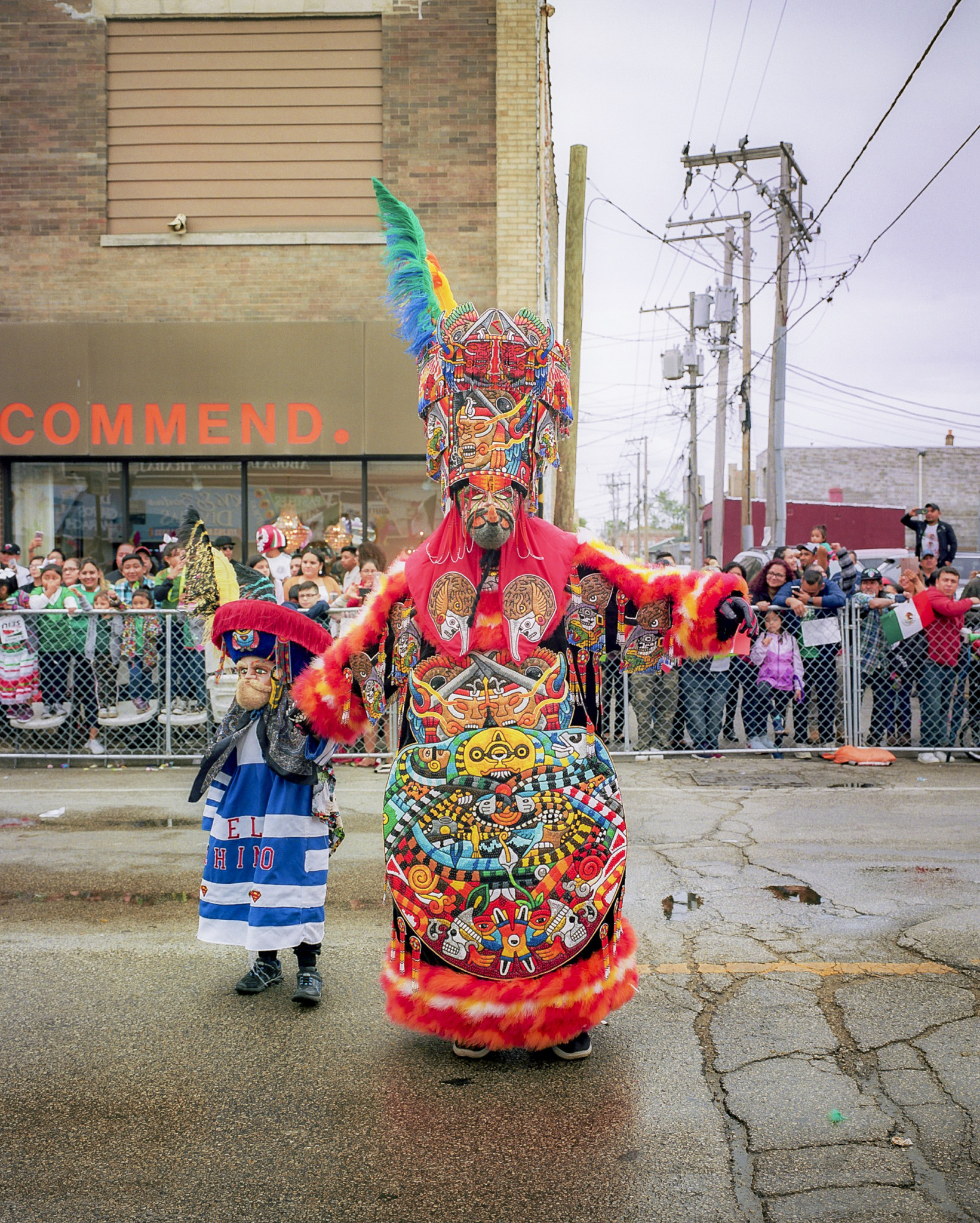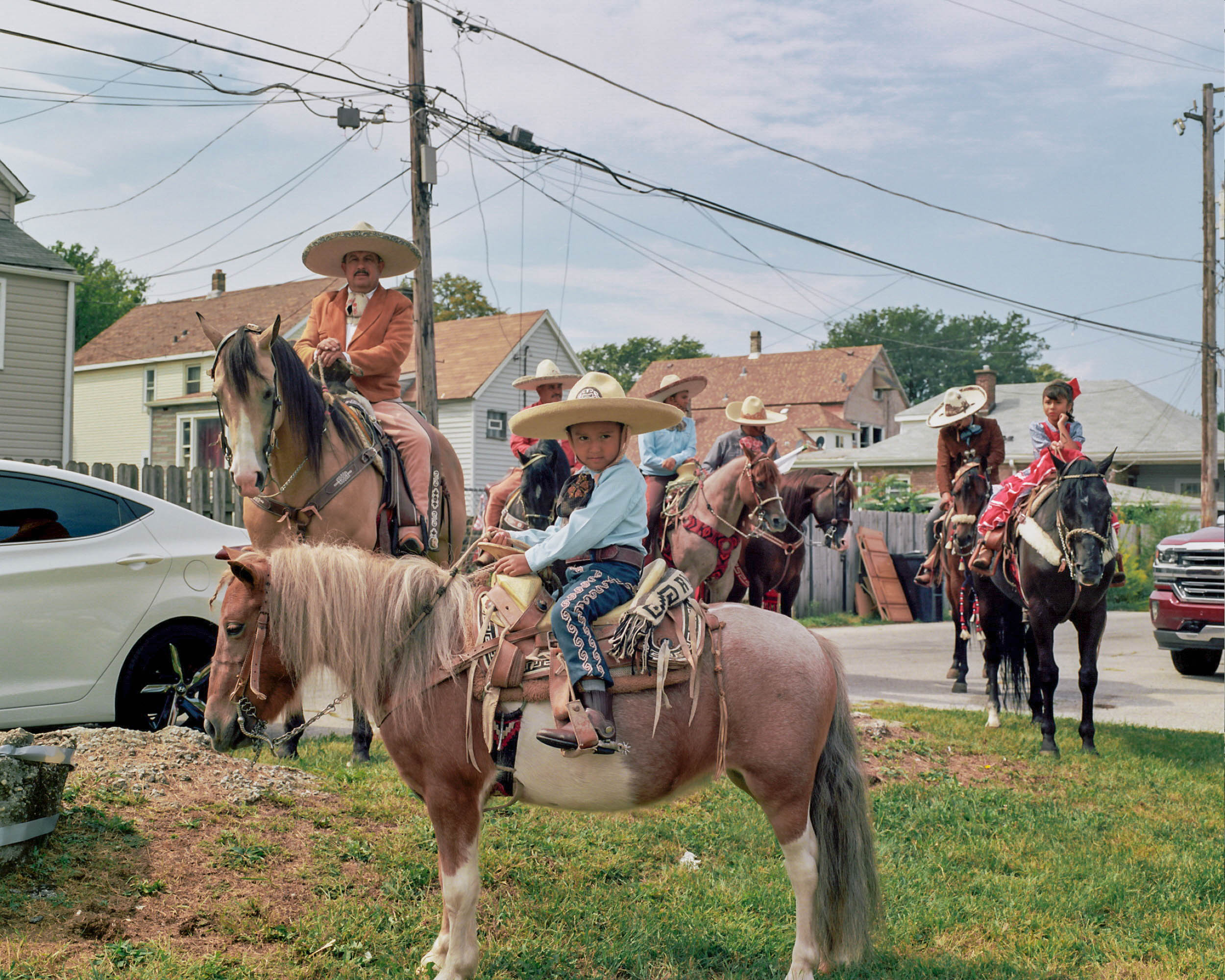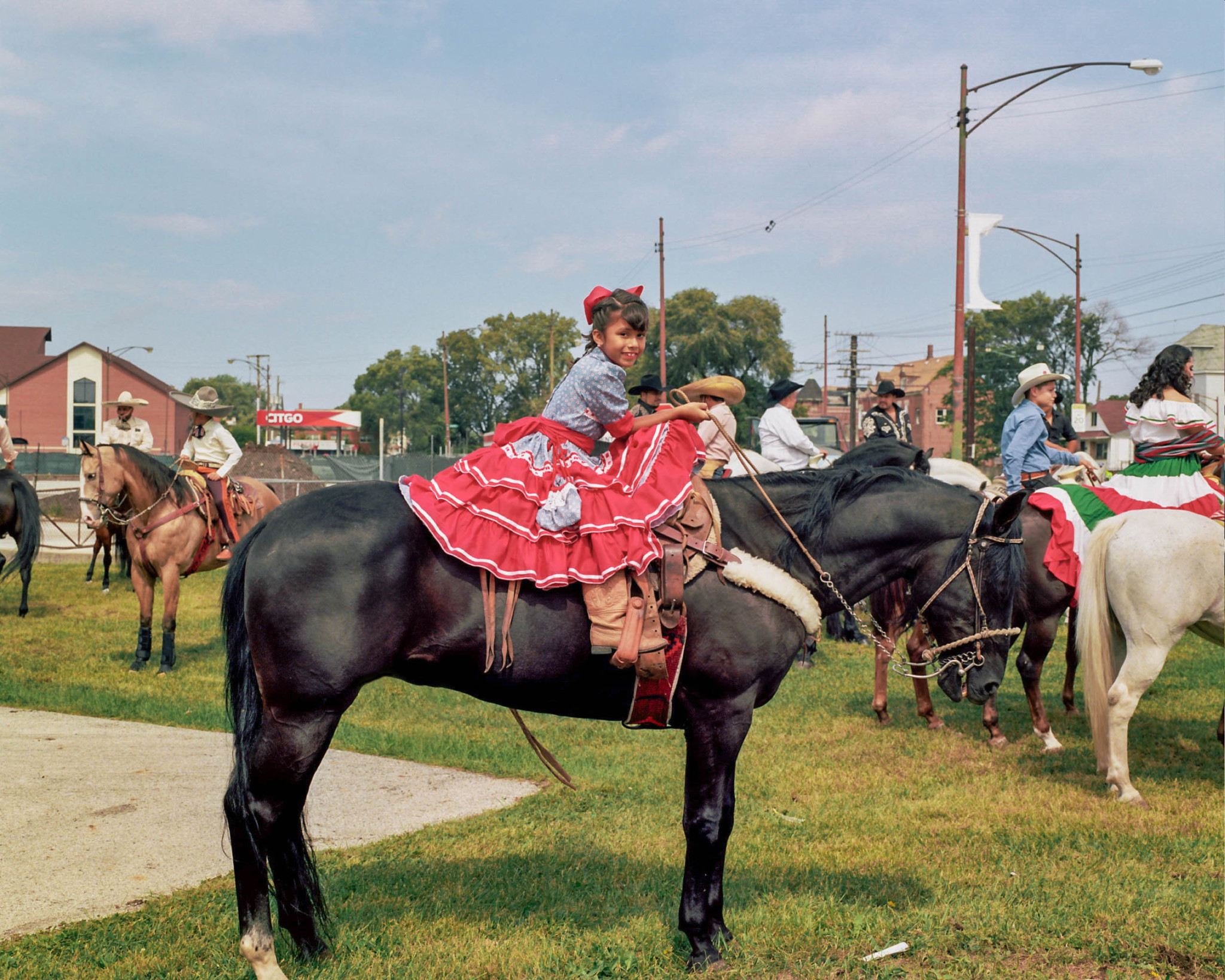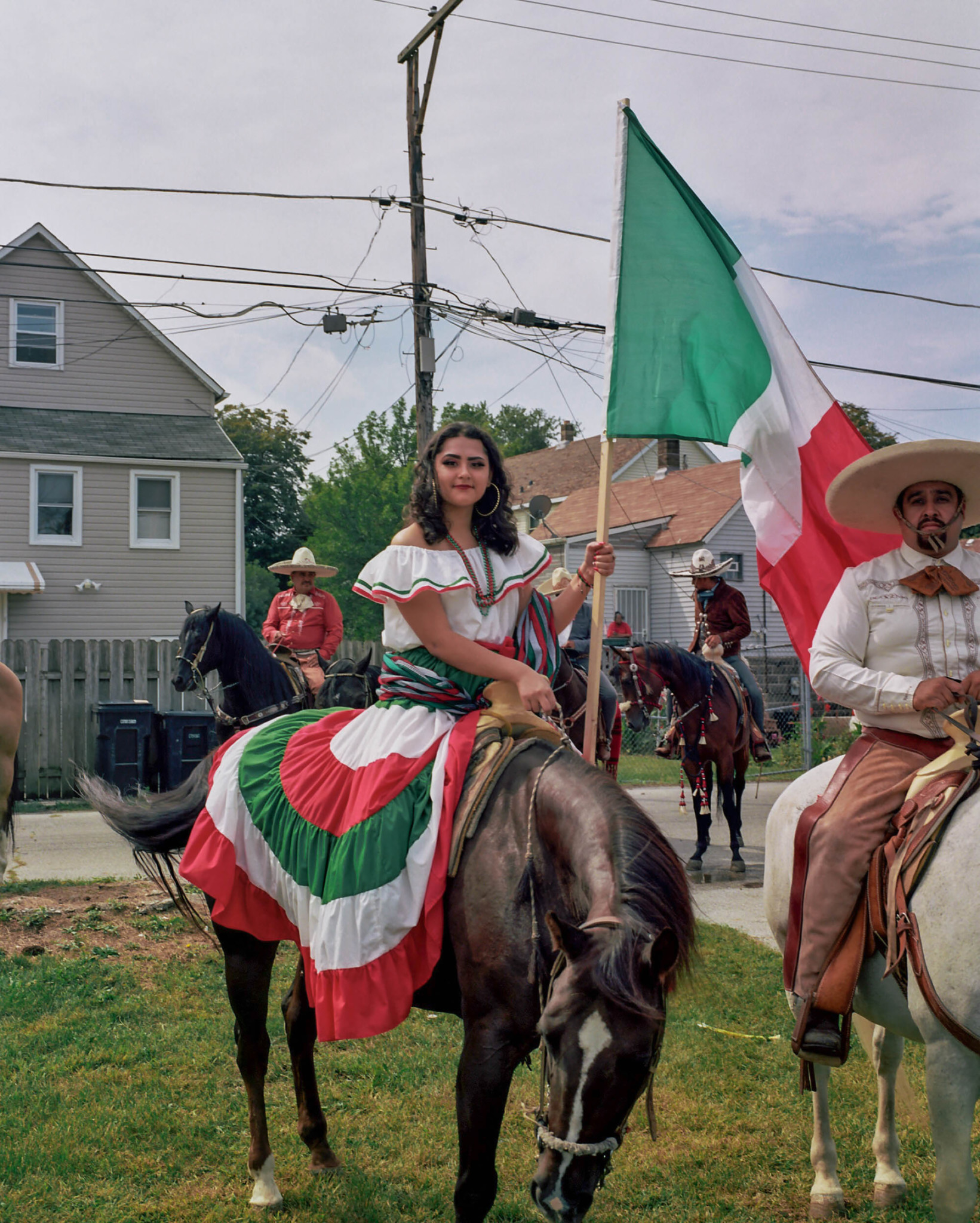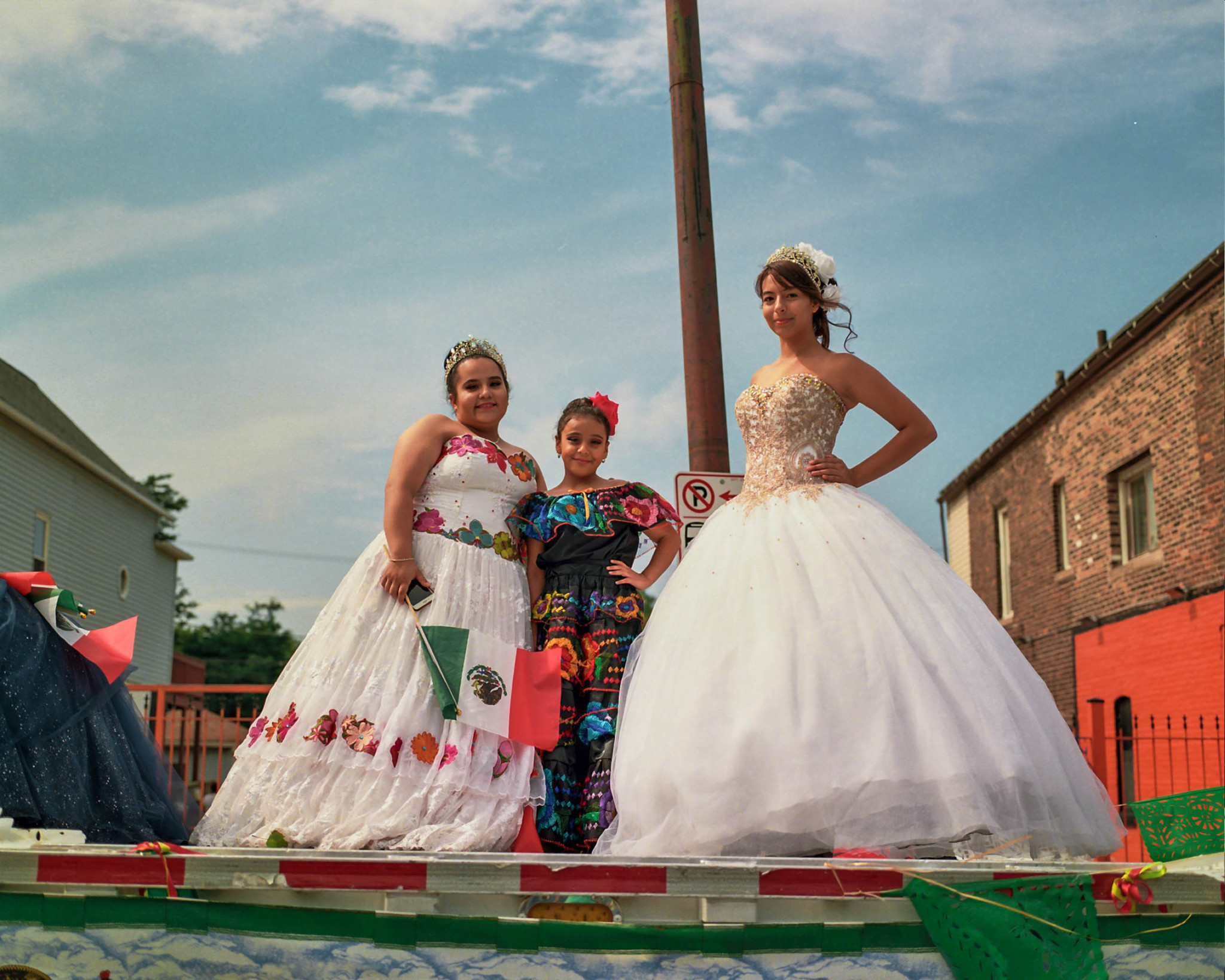Little Village celebrated fifty years of hosting its popular Mexican Independence Day Parade this year, believed to be the largest Latinx parade in the Midwest. But the much-anticipated annual event typically overshadows an even older Mexican celebration that unfolds in the city every September: the South Chicago Mexican Independence Day parade, which just observed its eightieth anniversary.
Because so much of Chicago’s Mexican life now revolves around Little Village, residents are often surprised to learn that the first major wave of Mexican immigrants settled in Chicago’s Southeast Side at the turn of the twentieth century. The South Chicago parade is a result of that first migration.
Roughly half of South Chicago’s population was foreign-born when Mexicans arrived to work in the steel mills alongside Black and European immigrants. Currently there is a steel monument at Steelworkers Park acknowledging that history titled “Tribute to the Past” that depicts a mustached steelworker with his family, designed by Mexican American local sculptor Roman Villarreal.
Each ethnic community, like the Irish, German, and Polish communities, not only erected their own church in South Chicago, but also organized their own parade. “These helped to create both an active social life and a sense of identity, pride, and loyalty based on residency,” says local historian Rod Sellers in his book Chicago’s Southeast Side. “All helped to create a sense of unity both within and beyond ethnic boundaries.”
By the late 1920s, the number of Mexicans had grown to nearly 20,000. Today, about one-fifth of South Chicago’s 28,000 residents are of Mexican descent, Census numbers show.
The parade route initially incorporated Our Lady of Guadalupe church, the oldest Mexican parish in Chicago (though it no longer does). Founded in 1928, the church sits a few blocks east of Commercial Avenue and across the street from a memorial to fallen Mexican American soldiers in the Vietnam War.
The parade, organized by the Mexican Patriotic Club, runs every year from 87th & Commercial to 100th & Commercial. A parade queen is picked by a local jury, and the parade line-up gives a nod to organized labor, Catholic schools, Latino veterans and fallen police officers, and motorcycle clubs, among the more traditional Mexican floats.
Thirteen miles north, in Little Village, a Mexican population of 80,000 people spills out into the streets every Mexican Independence Day weekend, an event that also attracts visitors from the suburbs and nearby states. While many upwardly mobile residents arrived from neighboring Pilsen, most Mexicans settled in Little Village as new immigrants in the 1980s.
Organized by the Little Village Chamber of Commerce, the parade begins on 26th & Albany and ends at 26th & Kostner, and aims to showcase the entrepreneurial spirit of the second-highest grossing retail district in Chicago.
Their most memorable parade marshals include Mexican music legends Joan Sebastian and Ramón Ayala. However, for its fiftieth anniversary, the Chamber invited fifty local businesses and organizations whose “contributions and lifelong service to our community have made a lasting impact” and should be recognized, said Blanca Soto, executive director of the Chamber.
They included well-known Mexican restaurants Aguascalientes, Los Comales, Nuevo Leon, El Milagro, El Faro, Birrieria Patiños-Ocotlan, Atotonilco, Los Gallos, and La Justicia.
The parade passes under a welcoming Mexican-style arch, built in 1990 as a joint effort between former Ald. Jesús “Chuy” García and the Mexican business owners at the Chamber. Its striking bronze clock was added later, a gift from the Mexican government to the city as a display of positive binational relations.
This year, Mexicans from different communities led caravans to downtown Chicago after police prohibited the traditional post-parade “cruising” in Little Village and other predominantly Mexican neighborhoods, they said. Residents showed up downtown in massive numbers and circled Trump Tower in a show of ethnic pride and political resistance.
Jacqueline Serrato is an independent journalist born and raised in the Little Village neighborhood. Follow her on Twitter @HechaEnChicago.

